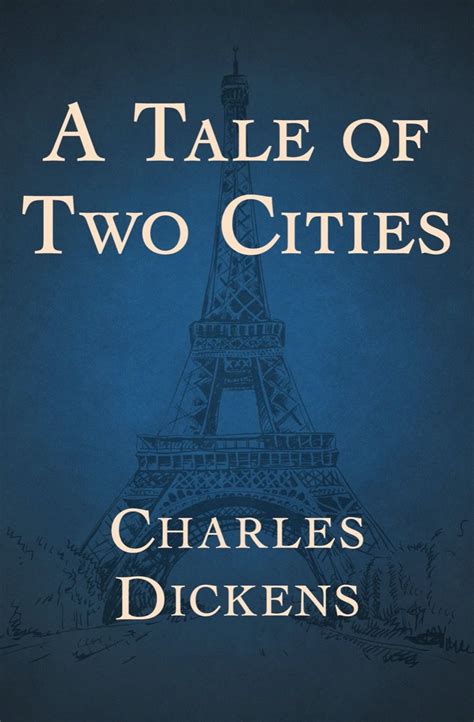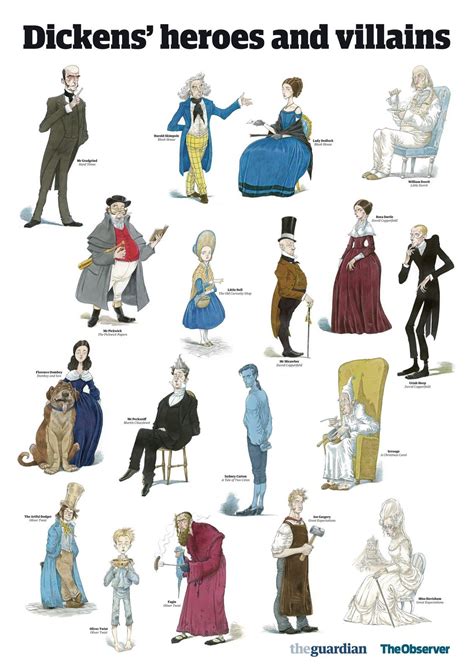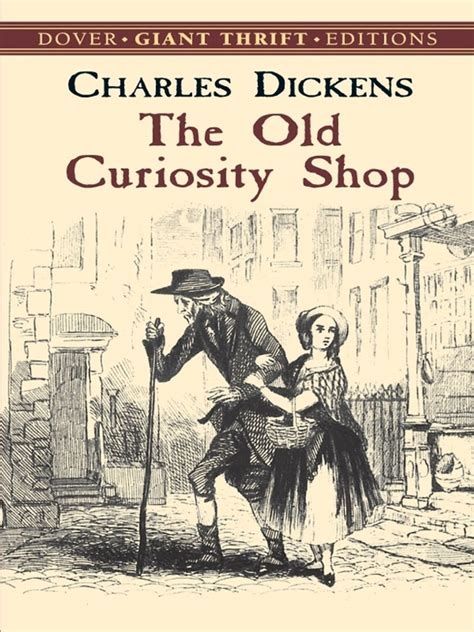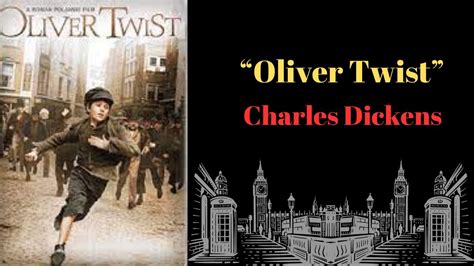Enter the captivating realm of one of literature's most celebrated figures, a brilliant wordsmith whose storytelling prowess continues to resonate with readers worldwide. Step into the enigmatic universe crafted by a literary genius, whose remarkable literary works have left an indelible mark on the world of literature.
Delve into the extraordinary artistic visions created by this legendary author, whose captivating narratives transport readers to a bygone era, pulsating with raw emotions, social complexities, and unforgettable characters. With each turn of the page, be enthralled by the expertly woven tapestry of his stories, bringing to life a world of tangled desires, moral dilemmas, and profound insights into the human condition.
Immerse yourself in the rich tapestry of his writings, each page a testament to his unmatched literary acumen and exceptional storytelling prowess. Through masterful strokes of his pen, this literary luminary paints vivid landscapes, rich in vivid imagery and poignant themes that resonate throughout the annals of literary history.
Early Life and Background: From Modest Beginnings to Literary Triumph

Examine the intriguing journey of Charles Dickens, a renowned Victorian writer and social critic, from humble beginnings to achieving immense success in the world of literature. This section delves into the formative years and background of this remarkable individual, showcasing the circumstances that shaped his remarkable path.
Charles Dickens, born on February 7, 1812, in Portsmouth, England, emerged from relatively modest circumstances, with his father working as a clerk in the Navy Pay Office. Despite facing financial struggles in his early life, Dickens demonstrated an early passion for storytelling and literature. His desire for knowledge led him to work as a law clerk and a freelance reporter, where he honed his skills as an observer of human nature and a wordsmith.
As Dickens immersed himself in various professions throughout his youth, his encounters with different social classes and the inequalities prevalent in society left a profound impact on his writing. Over time, he became increasingly invested in shedding light on the plight of the impoverished and oppressed. His experiences in the grim and poverty-ridden London slums provided him with valuable firsthand material for his later works.
| Key Stages | Significance |
|---|---|
| Formative Years | Dickens' early exposure to poverty and social injustice fueled his empathy and provided a foundation for his literary career. |
| Professional Endeavors | His varied occupations enabled him to gather diverse experiences that would later shape his imaginative storytelling and vivid characterization. |
| Social Awareness | Dickens' first-hand encounters with societal inequalities motivated him to become a voice for the marginalized, influencing his most impactful works. |
In this chapter, we delve into the influences of Dickens' early life and background, unveiling the stepping stones that led this talented wordsmith from humble beginnings to unparalleled literary achievements. Join us as we explore the formative years that contributed to the literary triumph of one of history's greatest authors.
Dickens's Inspirations: Exploring the Influences on His Writing Style
Delving into the sources of creative inspiration that shaped Charles Dickens's unique writing style unveils a rich tapestry of diverse influences. From the vibrant characters he encountered in his own life to the societal issues that stirred his compassion, Dickens's literary brilliance was intricately woven with the threads of personal experiences, moral convictions, and a deep understanding of human nature.
| 1. Personal Experiences | 2. Real-life Characters | 3. Social Injustices |
|---|---|---|
| In this section, we explore how Dickens's own life trials and triumphs served as a wellspring of creativity, fueling his writing with authentic emotions and personal insights. | Delve into the vibrant individuals Dickens encountered throughout his life, shaping his characters and infusing them with authenticity, relatability, and depth. | Discover how Dickens's keen sense of social justice fueled his desire to shed light on the pressing issues of his time, such as poverty, child labor, and inequality. |
| 4. Literary Influences | 5. Historical Context | 6. Travel and Observation |
| Explore the works of the writers who influenced Dickens's writing style and how he incorporated their techniques into his own storytelling. | Gain insights into the historical backdrop against which Dickens's stories unfolded, shaping the themes and settings that became synonymous with his works. | Learn how Dickens's extensive travels and keen powers of observation enriched his storytelling, infusing his narratives with vivid descriptions and a keen eye for detail. |
By examining these various sources of inspiration, we gain a deeper appreciation for the genius of Charles Dickens and the enduring impact of his literary contributions. His writing style, a product of multifaceted influences, continues to captivate readers and ignite imaginations across generations.
A Tale of Two Cities: Exploring his Most Acclaimed Novel

In this section, we delve into the captivating world created by the literary genius, Charles Dickens, in his highly acclaimed novel "A Tale of Two Cities". Through rich storytelling and intricate character development, Dickens paints a compelling portrait of contrasting cities, intertwined fates, and the consequences of social and political unrest.
Within the pages of "A Tale of Two Cities", Dickens masterfully intertwines the lives of characters from different social classes, presenting a thought-provoking exploration of inequality and revolution. This monumental work of historical fiction offers a vivid portrayal of London and Paris during the French Revolution, where we witness the stark disparities between the extravagantly privileged aristocracy and the impoverished masses gripped by oppression.
With his keen eye for detail and gift for storytelling, Dickens brings forth a cast of unforgettable characters, such as the enigmatic Sydney Carton and the virtuous Lucie Manette, whose lives become entangled in a complex web of love, sacrifice, and redemption. Through their trials and triumphs, Dickens examines the transformative power of personal sacrifice and the resilience of the human spirit.
The themes explored in "A Tale of Two Cities" resonate through the ages, making the novel a timeless and enduring classic. Through his vivid prose and evocative descriptions, Dickens transports readers to a tumultuous era, where hope and despair coexist, and where personal choices hold the power to shape destinies. As we journey through the pages of this literary masterpiece, we are compelled to reflect on the nature of humanity, the pursuit of justice, and the enduring power of love and compassion.
In the following sections, we will further delve into the narrative structure, key motifs, and the impact of "A Tale of Two Cities" both during Dickens' time and in the modern world. Prepare to be captivated by the brilliance and timeless relevance of this extraordinary literary work.
Dickens's Social Critique: Shedding Light on the Issues of his Time
In this section, we delve into the profound social commentary of one of the most revered authors in literary history, Charles Dickens. Through his remarkable writing style and keen observation, Dickens sheds light on the pressing issues that plagued the Victorian era. By examining his works, we gain a deeper understanding of the social, economic, and cultural challenges faced by individuals from all walks of life during this pivotal period in history.
Dickens masterfully uses his characters and narratives to expose the harsh realities and injustices prevalent in society. Whether it be the stark divide between the rich and the poor, the exploitative practices of industrialization, or the deplorable conditions of the working class, Dickens fearlessly confronts these issues and invites readers to reflect upon the consequences of such societal problems.
Throughout his novels, Dickens introduces a plethora of memorable characters who serve as a reflection of the society they inhabit. From the destitute and oppressed to the wealthy and privileged, each character represents a distinct social class or group, providing a comprehensive portrait of Victorian society. Through their stories, Dickens advocates for the marginalized and exposes the corruption and hypocrisy that often lurked beneath the surface of society.
By employing vivid descriptions and evocative language, Dickens immerses readers in his carefully crafted worlds, allowing us to witness firsthand the social decay, moral degradation, and human suffering that were prevalent during his time. His narratives serve as powerful reminders of the need for compassion, understanding, and social reform.
From his iconic works such as "Oliver Twist" and "A Tale of Two Cities" to lesser-known gems like "Hard Times" and "Bleak House," Dickens's social critique remains relevant and resonant in the modern world. Through the lens of his literary brilliance, we gain invaluable insights into the struggles, triumphs, and complexities of the Victorian era, ultimately prompting us to reflect on the social issues that persist in our own time.
- Dickens fearlessly confronts societal injustices.
- His characters represent distinct social classes.
- His language and descriptions immerse readers in his world.
- His social critique remains relevant in the modern world.
The Dynamic Characters: Exploring Dickens's Unforgettable Protagonists

In this section, we delve into the captivating world of Charles Dickens's literary masterpieces by examining the remarkable protagonists that he brought to life. Through his unparalleled storytelling prowess, Dickens created a vast array of characters who have left an indelible mark on literature.
Each protagonist in Dickens's works possesses a distinct personality and a compelling backstory that draws readers in. From the lovable orphan Oliver Twist to the resilient and selfless Pip in "Great Expectations," these characters continue to resonate with audiences of all ages.
Dickens's protagonists are often faced with adversities and challenges that mirror the harsh realities of Victorian society. Through their experiences, readers gain insight into the social injustices and inequalities prevalent during Dickens's era, highlighting his commitment to shedding light on societal issues through his literary creations.
- Ebenezer Scrooge: The iconic protagonist of "A Christmas Carol" undergoes a transformative journey, ultimately teaching us the power of compassion and redemption.
- David Copperfield: Through David's narrative, Dickens explores themes of resilience, self-discovery, and the triumph of the human spirit.
- Esther Summerson: The complex and multifaceted Esther serves as the central figure in "Bleak House," providing readers with a deep understanding of the societal prejudices faced by women in Dickens's time.
As we delve deeper into the lives of these characters, we uncover the depth and complexity of Dickens's storytelling. Through his unforgettable protagonists, Dickens continues to captivate readers, offering timeless lessons and insights into the human condition.
Dickens's Writing Process: Unveiling His Techniques and Daily Routine
Exploring the methodology behind Dickens's literary achievements provides a captivating glimpse into the intricacies of his creative process. By examining his unique techniques and daily routine, it becomes evident how he harnessed his immense talent to craft timeless masterpieces.
Dickens approached his writing with meticulous attention to detail, leveraging a range of techniques to bring his stories to life. One key aspect of his process involved sketching out complex character profiles, imbuing each individual with distinct traits and idiosyncrasies. This allowed him to create rich and memorable personalities that resonated with readers.
- Imaginative Settings: Dickens was also renowned for his ability to conjure vibrant and immersive locations for his stories. Through his vivid descriptions, readers were transported to bustling Victorian streets, dilapidated workhouses, and elegant manor houses, setting the stage for dramatic narratives.
- Intricate Plotting: Another hallmark of Dickens's writing process was his skillful plotting. He intricately wove together multiple storylines, deftly interconnecting characters and their destinies. This technique served to enhance tension and maintain readers' engagement throughout his novels.
- Sharp Observations: Dickens possessed a keen eye for observing the world around him, which he skillfully incorporated into his work. By capturing the social, political, and economic realities of his time, his stories offered valuable insights into the human condition, making them both socially relevant and compelling.
Beyond techniques specific to his writing, Dickens adhered to a disciplined daily routine that facilitated his literary brilliance. He maintained a strict writing schedule, often waking early in the morning to write in solitude before attending to his other responsibilities. This dedication and routine allowed him to harness his creative energies and channel them into his work.
Moreover, Dickens commonly engaged in long walks throughout the day, using these excursions as a means of inspiration and reflection. The sights, sounds, and conversations he encountered during these walks frequently found their way into his stories, enriching the authenticity and depth of his narrative worlds.
Understanding Dickens's writing process grants us a profound appreciation for the genius behind his literary achievements. His meticulous techniques and committed daily routine are testaments to his unwavering passion for storytelling and uncompromising commitment to his craft.
Dickens as a Traveler: Exploring the Places that Ignited his Novels

Embarking on a journey through the narratives of Charles Dickens is like traveling through time and space. His vivid descriptions of cities, towns, and landscapes transport readers to a bygone era, immersing them in the sights, sounds, and smells of the Victorian age. But what if we could retrace Dickens' footsteps and uncover the real-life places that inspired his literary masterpieces?
As a passionate traveler, Dickens embarked on countless adventures, which provided him with the rich tapestry of settings that became the backdrop for his unforgettable characters and stories. From the bustling streets of London to the quaint villages of rural England, Dickens found inspiration in every corner of the country.
One of the most iconic locations associated with Dickens is the city of London itself. With its teeming crowds, vibrant markets, and sprawling slums, the city provided the perfect canvas for Dickens to explore themes of poverty, social inequality, and redemption. From the haunted marshes of Kent in "Great Expectations" to the gritty backstreets of London in "Oliver Twist," Dickens skillfully portrayed the contrasting realities of Victorian society.
But it wasn't just the urban landscapes that captivated Dickens; he also had a deep love for the English countryside. The rolling hills of Kent, the picturesque towns of Canterbury and Rochester, and the serenity of the River Thames all feature prominently in his works. These idyllic settings served as a stark contrast to the hardships faced by his characters, offering moments of respite and tranquility amidst the chaos of Victorian life.
For those who wish to delve deeper into Dickens' world, following in his footsteps is an enriching experience. From visiting the Charles Dickens Museum in London, which preserves the author's former residence, to exploring the real-life locations that inspired his novels, such as the Marshalsea Debtors' Prison or the Old Curiosity Shop, it is possible to walk in the footsteps of this literary genius.
Through his travels and observations, Dickens not only captured the essence of Victorian England but also laid the groundwork for the modern travelogue. By intertwining his personal experiences with his literary imagination, he created a world that continues to captivate readers and inspire exploration to this day.
Dickens's Legacy: Exploring His Enduring Impact on Literature and Society
In the realm of literature and society, few names carry the weight and significance that Charles Dickens does. With his insightful storytelling and deep understanding of the human condition, Dickens left an indelible mark on the literary world. His works continue to captivate readers, offering a profound reflection on the social issues of his time and speaking to the universal themes that resonate with audiences even today.
Influence on Literature: Dickens's literary brilliance lies not only in his compelling narratives but also in his unforgettable characters and vivid descriptions. His works, such as "Great Expectations," "A Tale of Two Cities," and "Oliver Twist," have become immortalized within the literary canon, praised for their masterful storytelling and portrayal of complex human emotions. Through his unique blend of satire, humor, and social commentary, Dickens crafted narratives that not only entertained but also challenged norms and shed light on the oppressive conditions faced by the marginalized members of Victorian society.
Social Impact: Beyond his contributions to literature, Dickens's social impact cannot be overstated. His works drew attention to the harsh realities of the Industrial Revolution, exposing the disparity between the wealthy upper class and the impoverished working class. Dickens's portrayal of poverty, child labor, and social injustice prompted public discourse and influenced the formation of new societal policies. His ability to bring social issues to the forefront of the collective consciousness paved the way for subsequent generations of writers to engage with similar themes and continue the fight for social change.
In conclusion, Dickens's legacy is multifaceted and far-reaching. His literary brilliance continues to captivate readers, while his social impact has left an enduring mark on both the literary landscape and society as a whole. Through his works, Dickens reminds us of the power of storytelling and the potential for literature to not only entertain but also provoke thought, inspire empathy, and catalyze positive societal change.
Rediscovering Dickens: The Timeless Relevance of his Literary Legacy

In today's rapidly evolving world, where everything seems to change at an unprecedented pace, it is remarkable to find a writer whose works have managed to withstand the test of time and remain relevant. Such is the case with the literary genius of Charles Dickens. His captivating storytelling, rich character development, and poignant social commentary continue to resonate with readers of all ages and backgrounds.
- Dickens' Timeless Themes: Delving into the depths of human nature, Dickens masterfully explores timeless themes such as love, redemption, justice, and the struggle for social equality. His characters are often relatable, grappling with universal challenges that transcend time and place. From the oppressed working class to the corrupt elite, Dickens' narratives shed light on the human condition and provide insights into the complexities of society.
- A Mirror to Society: Dickens' works serve as a mirror to society, reflecting the social injustices and inequalities that plagued nineteenth-century England. His vivid portrayals of poverty, exploitation, child labor, and the plight of the marginalized shed light on the social issues of his time. Remarkably, many of these themes still resonate with modern readers, highlighting the enduring relevance of Dickens' works in addressing societal issues even today.
- The Power of Empathy: One of the enduring qualities of Dickens' writing is his ability to instill empathy in his readers. Through his deeply layered characters, Dickens invites us to walk in their shoes, to feel their suffering, and to understand their hopes and dreams. This ability to evoke empathy not only contributes to the emotional impact of his stories but also fosters a greater understanding and compassion for others, transcending time and societal boundaries.
- A Beacon of Hope: Amidst the dark and often harsh realities depicted in his novels, Dickens also offers a glimmer of hope. Whether through moments of redemption, acts of kindness, or the triumph of the human spirit, he reminds us that even in the face of adversity, there is room for hope and change. This enduring message resonates with readers of all generations, serving as a reminder of the power of perseverance and the potential for a better future.
- Inspiring Generations: Dickens' unparalleled storytelling ability has not only captivated readers during his time but has also inspired countless generations of writers, scholars, and artists. His influence can be seen in literature, theater, film, and beyond. From his memorable characters to his vivid descriptions of Victorian England, Dickens' works continue to inspire and shape artistic expressions, solidifying his timeless legacy in the literary world.
As we delve into the works of Dickens today, we discover that his storytelling transcends time, creating a narrative bridge between the past and the present. Through his exploration of timeless themes, his mirror to society, the power of empathy, and his ability to inspire hope, Dickens' works continue to resonate and captivate the hearts and minds of readers, proving that his legacy is as relevant today as it was in the Victorian era.
FAQ
Who is Charles Dickens?
Charles Dickens was an English writer and social critic. He is considered one of the greatest novelists of the Victorian era.
What are some of Charles Dickens' most famous novels?
Some of Charles Dickens' most famous novels include "Great Expectations," "A Tale of Two Cities," and "Oliver Twist."
What influenced Charles Dickens' writing?
Charles Dickens' writing was greatly influenced by his own experiences, including his difficult childhood and his observations of social injustices in Victorian England.
How did Charles Dickens contribute to the literary world?
Charles Dickens made significant contributions to the literary world by popularizing the serialized novel and creating memorable and relatable characters that reflected the realities of his time.
What is the legacy of Charles Dickens' work?
The legacy of Charles Dickens' work lies in his ability to shed light on social issues, his enduring characters, and his profound impact on the development of the novel as a literary form.



